Plant Reproduction
Plant reproduction is the process by which plants produce new individuals, either through sexual or asexual means. This is a vital process for the continuation of plant species and maintaining biodiversity in the ecosystem.
Types of Plant Reproduction
There are two main types of plant reproduction:
- Sexual Reproduction: In sexual reproduction, plants produce offspring through the union of male and female reproductive cells. This process involves the formation of seeds and occurs in flowering plants.
- Asexual Reproduction: Asexual reproduction involves the production of new plants without the involvement of seeds or spores. This can occur through various methods such as fragmentation, budding, or the growth of specialized plant structures.
Sexual Reproduction in Plants
Sexual reproduction in plants involves several key processes:
- Pollination: Pollination is the transfer of pollen from the male reproductive organ (anther) to the female reproductive organ (stigma) of a flower. This process can occur through wind, insects, birds, or other animals.
- Fertilization: After pollination, the pollen grain germinates on the stigma and grows a pollen tube that delivers the male gametes to the ovule. Fertilization occurs when the male gametes fuse with the female gametes within the ovule, leading to the formation of a zygote.
- Seed Formation: After fertilization, the ovule develops into a seed, which contains the embryo of the new plant. The seed is protected by a seed coat and often contains stored food reserves to support the growing embryo.
- Seed Dispersal: Once mature, the seed is dispersed by various means such as wind, water, or animals, allowing the new plant to grow in a different location.
Asexual Reproduction in Plants
Asexual reproduction in plants can occur through different mechanisms:
- Fragmentation: Some plants can reproduce asexually through fragmentation, where a part of the plant (such as a stem or a leaf) detaches and grows into a new individual.
- Budding: Certain plants can produce new individuals through budding, where a new plant grows as an outgrowth from the parent plant.
- Specialized Plant Structures: Some plants develop specialized structures, such as rhizomes, stolons, or tubers, which can give rise to new plants.
Study Guide
To understand the topic of plant reproduction, it's important to focus on the following key points:
- Understand the differences between sexual and asexual reproduction in plants.
- Learn the processes of pollination, fertilization, seed formation, and seed dispersal in sexual reproduction.
- Identify the various mechanisms of asexual reproduction and their significance in plant propagation.
- Explore examples of plants that reproduce through both sexual and asexual means.
- Understand the importance of plant reproduction for ecosystem stability and biodiversity.
By mastering these concepts, you will gain a comprehensive understanding of plant reproduction and its significance in the natural world.
.◂Science Worksheets and Study Guides Sixth Grade. Plant reproduction
Study Guide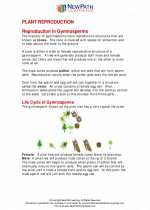 Plant reproduction
Plant reproduction  Activity Lesson
Activity Lesson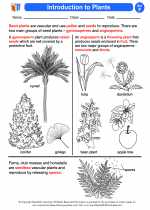 Introduction to Plants
Introduction to Plants  Worksheet/Answer key
Worksheet/Answer key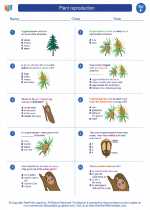 Plant reproduction
Plant reproduction  Worksheet/Answer key
Worksheet/Answer key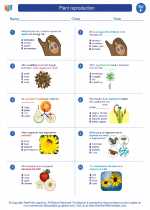 Plant reproduction
Plant reproduction  Worksheet/Answer key
Worksheet/Answer key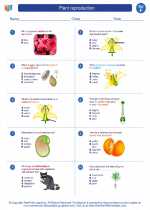 Plant reproduction
Plant reproduction  Vocabulary/Answer key
Vocabulary/Answer key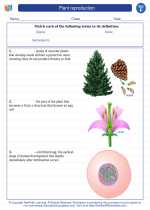 Plant reproduction
Plant reproduction 

 Activity Lesson
Activity Lesson
 Worksheet/Answer key
Worksheet/Answer key
 Worksheet/Answer key
Worksheet/Answer key
 Worksheet/Answer key
Worksheet/Answer key
 Vocabulary/Answer key
Vocabulary/Answer key

The resources above cover the following skills:
LIFE SCIENCE
From Molecules to Organisms: Structures and Processes
Students who demonstrate understanding can:
Use argument based on empirical evidence and scientific reasoning to support an explanation for how characteristic animal behaviors and specialized plant structures affect the probability of successful reproduction of animals and plants respectively.